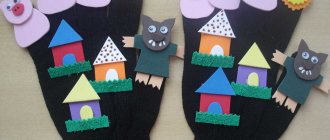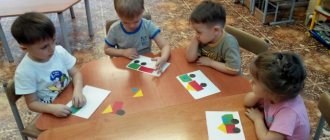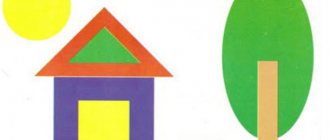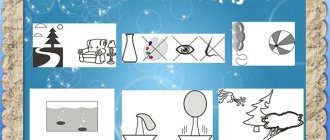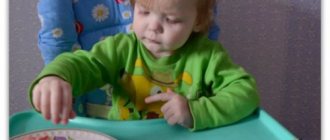Clay crafts
Pottery was a useful and profitable craft. The main dishes were made from clay. Along with dishes, potters sculpted all kinds of clay toys. Then the making of clay toys became a separate craft. Entire families practiced it. In the 19th century, there were about 40 families of toy makers in Dymkovskaya Sloboda.
Toy craft
Several traditions of clay toys are still known: Dymkovo, Abashevskaya, Kargopol, Filimonovskaya. Each tradition has its own distinctive features in shape, color and ornament.
Dymkovo toys are characterized by lush frills on the skirts of young ladies or on the tails of birds. The ornament is dominated by geometric patterns. Red, yellow, blue, blue, green are the main colors for painting toys.
Filimonov toys are mainly whistles. Among the figurines there are many riders on horses with long necks, and all kinds of birds. A distinctive feature is the geometric pattern, mainly crimson, also yellow, blue, and green. A characteristic element of the pattern is a stripe.
Clay crafts have gained popularity in Russia. They were more often used for interior decoration than for children's games. The figurines were given the meaning of a talisman. It was believed that a bird brings happiness, a horse brings a rich harvest, and bear cubs with a barrel full of honey symbolize goodness.
Master class: Dymkovo toy
It’s best to start getting acquainted with the Dymkovo toy with a simple figurine of a pet goat, horse or lamb. A master class on creating Russian folk crafts with step-by-step instructions will help a beginner make a cute lamb on his own.
For creative activities with children, you can use plasticine instead of clay. Replacing clay with plasticine will simplify and speed up the process.
The lamb figurine consists of several parts:
- torso;
- neck;
- heads;
- legs;
- ears;
- horn.
The torso is molded from one piece of plasticine slightly smaller than the size of a fist. First, roll the ball between your palms. Then it is rolled out into a short roll.
The head and neck are sculpted from one piece, which is thinner at one end. The piece is bent so that the narrow end forms the figure's head.
The legs are made from thinner rollers. Roll out two long pieces. They are cut in the middle in a stack at an angle. This is done for the convenience of connecting the leg blanks to the body.
In conclusion, all that remains is to sculpt the small details: the ears, bangs, tail and horns of the lamb. Craft ears are molded from 2 small balls of plasticine. They are flattened with your fingers and you get 2 cakes. I wrap each cake in a funnel.
The bangs are made from two thin “sausages”, which are connected into a short braid. The tail is short. Simply roll it out of a small roller and sharpen the end. The horns are long. It is necessary to roll out two long rollers of medium thickness.
The final stage is connecting the parts. First, connect the legs and torso. Then all the details of the head: ears, bangs, horns. They apply the neck and head to the body. Don't forget the tail.
After completing the sculpting of the figures, they begin painting. The first stage is priming with white water-based paint. Apply several layers. The figurine is painted in the Dymkovo tradition with gouache or acrylic paints.
The main element of the ornament is symmetrical circles of different diameters. Yellow, red, blue are an excellent choice of colors for painting a lamb. Ears, bangs and tail are painted black. The eyes, nose and hooves are painted with the same color. The horns are covered with yellow paint.
Sundress
The word “sarafan” comes from the Persian “saran pa” - “over the head”. It was first mentioned in the Nikon Chronicle of 1376. However, the overseas word “sarafan” was rarely heard in Russian villages. More often - a kostych, damask, kumachnik, bruise or kosoklinnik. The sundress was, as a rule, of a trapezoidal silhouette; it was worn over a shirt. At first it was purely men's attire, ceremonial princely vestments with long folding sleeves. It was made from expensive fabrics - silk, velvet, brocade. From nobles, the sundress passed to the clergy and only then became established in the women's wardrobe.
Sundresses were of several types: blind, swing, straight. Swing ones were sewn from two panels, which were connected using beautiful buttons or fasteners. The straight sundress was fastened with straps. A blind oblique sundress with longitudinal wedges and beveled inserts on the sides was also popular.
Costume from the author's collection of artists Karelin.
Sundresses with soul warmers
Recreated holiday sundresses
The most common colors and shades for sundresses are dark blue, green, red, light blue, and dark cherry. Festive and wedding attire was made mainly from brocade or silk, and everyday attire was made from coarse cloth or chintz.
“Beauties of different classes dressed up almost identically - the only difference was the price of the furs, the weight of the gold and the shine of the stones. When going out, a commoner wore a long shirt, over it an embroidered sundress and a jacket trimmed with fur or brocade. The noblewoman - a shirt, an outer dress, a letnik (a garment that flares out at the bottom with precious buttons), and on top there is also a fur coat for added importance.”
Veronica Batkhan. "Russian beauties"
Portrait of Catherine II in Russian dress. Painting by Stefano Torelli
Portrait of Catherine II in shugai and kokoshnik. Painting by Vigilius Eriksen
Portrait of Grand Duchess Alexandra Pavlovna in Russian costume." Unknown artist. 1790 javascript: void(0)
For some time, the sundress was forgotten among the nobility - after the reforms of Peter I, who forbade those close to him to wear traditional clothes and cultivated the European style. Catherine the Great, a famous fashion trendsetter, returned the item of clothing. The Empress tried to instill in her Russian subjects a sense of national dignity and pride, a sense of historical self-sufficiency. When Catherine began to rule, she began to dress in Russian dress, setting an example for the ladies of the court. Once, at a reception with Emperor Joseph II, Ekaterina Alekseevna appeared in a scarlet velvet Russian dress, studded with large pearls, with a star on her chest and a diamond diadem on her head. And here is another documentary evidence from the diary of an Englishman who visited the Russian court: “The Empress was in Russian attire - a light green silk dress with a short train and a bodice of gold brocade, with long sleeves.”
Belt
Women's wool belts
Belts with Slavic patterns
Machine for weaving belts
In Rus', it was customary for a woman’s undershirt to always be belted; there was even a ritual of girding a newborn girl. It was believed that this magic circle protected against evil spirits; the belt was not removed even in the bathhouse. Walking without it was considered a great sin. Hence the meaning of the word “unbelt” - to become insolent, to forget about decency. Wool, linen or cotton belts were crocheted or woven. Sometimes the sash could reach a length of three meters; these were worn by unmarried girls; hem with a voluminous geometric pattern was worn by those who were already married. A yellow-red belt made of woolen fabric with braid and ribbons was worn on holidays.
Poneva
Woman suit. Poneva
Woman suit. Poneva
Costume from the author's collection of artists Karelin
Poneva - a baggy skirt - was a mandatory element of a married woman's wardrobe. Poneva consisted of three panels and could be blind or hinged. As a rule, its length depended on the length of the woman's shirt. The hem was decorated with patterns and embroidery. Most often, poneva was sewn from wool blend fabric in a checkered pattern.
The skirt was put on a shirt and wrapped around the hips, and a woolen cord (gashnik) held it at the waist. An apron was usually worn on top. In Rus', for girls who had reached adulthood, there was a ritual of putting on a poneva, which indicated that the girl could already be betrothed.
Red
Costume from the author's collection of artists Karelin
Woman suit. Red color
A women's costume from the village of Twilight, Pronsky district, Ryazan province, and a peasant woman's costume from the village of Vetchany, Kasimovsky district. The end of the 19th - the beginning of the 20th century. Ryazan Historical and Architectural Museum-Reserve
This color was preferred in clothing by both peasants and boyars. The color of fire and sun, a symbol of power and fertility. Up to 33 shades of red can be seen in traditional Russian costumes. Each shade had its own name: meat, worm, red, crimson, bloody, red or red.
Nice clothes are a letter of recommendation
Lace Museum
House of Yelets Lace
Scarves and shawls in Russian folk costume
Moscow Historical and Ethnographic Theater
Folklore and ethnographic theater "Kresen"
The age of its owner could be determined by the clothes. Young girls dressed most flamboyantly before the birth of a child. The costumes of children and older people were distinguished by a modest palette.
The women's costume was replete with patterns. Images of people, animals, birds, plants and geometric shapes were woven into the ornament. Sun signs, circles, crosses, rhombic figures, deer, and birds predominated.
Wooden toys
Scenes from the surrounding life became the theme for creating wooden crafts. In villages, children played with dolls made with an axe. With the advent of the plane and other woodworking tools, toys began to transform and improve.
Tumblers, which are now made of plastic, first appeared in the 19th century. Back then they were made of wood. They were painted to look like merchants, clowns, and funny fat women. Using a knife, two halves were cut out of linden, and a weight was attached inside the round blank. Both parts were glued together, painted, dried and varnished. This traditional Russian toy was the first toy in life for many generations of children.
Ancient folk traditions are being revived again. Russian art, dormant in grandmothers' chests, is becoming more popular every year. It evokes admiration among foreigners and pride among descendants. Now there are many sites on the Internet where master classes show and tell in detail how to make a folk craft yourself.
Apron
Costume from the author's collection of artists Karelin
Women's urban costume in folk style: jacket, apron. Russia, late 19th century
Women's costume from the Moscow province. Restoration, contemporary photography
The apron not only protected clothes from contamination, but also decorated the festive outfit, giving it a finished and monumental look. The wardrobe apron was worn over a shirt, sundress and poneva. It was decorated with patterns, silk ribbons and finishing inserts, the edge was decorated with lace and frills. There was a tradition of embroidering the apron with certain symbols. From which it was possible, as from a book, to read the history of a woman’s life: the creation of a family, the number and gender of children, deceased relatives.
Rag dolls-amulets
The most common Slavic crafts are amulets dolls. They express the pagan beliefs of the ancient Slavs in the power of amulets and amulets against evil spirits. Each type of doll was endowed with a certain specialization. Some dolls were “responsible” for happiness, others protected the well-being of the family, and others helped make wishes come true.
Features of making the amulet
Bereginya was made from the fabric of used clothes. It was believed that such material increases the power of the amulet. A characteristic feature of the protector doll is that it is faceless. The absence of a face makes the doll an inanimate object, without a spirit, and therefore harmless to its owner.
The rag doll had a simple structure. Most often, she was given feminine shapes, dressed in long dresses, and braided.
Master class: DIY folk doll
It's easy to make a folk rag doll with your elementary school children. You must first prepare the materials:
- cotton wool or synthetic winterizer;
- white and colored fabric;
- threads;
- scissors.
First, the blanks are cut out. From each type of fabric, cut out 1 piece measuring 20x20 cm and another 1 square of colored fabric 15x15 cm for a scarf.
Then they make the doll's head. Cotton wool is placed in the center of a square of white fabric. They tie it with thread to form a small ball. Hands are created from two opposite corners of the fabric. You need to tuck the corners and tie them with thread.
We dress the doll in a sundress. A large colored piece is folded in half and wrapped around the doll under the arms. Tie tightly with thread. You can use braid to tie a colorful belt.
A scarf made of a smaller colored square is tied around the head. Secure it with a thread at the level of the doll’s neck.
You can make a play doll and draw a face. But without it, the craft will look more like a coastline.
The doll will be more elegant if the sundress and scarf are made of fabrics with different prints or contrasting colors.
Cabbage style
A distinctive feature of the Russian national costume is its multi-layered nature. The everyday suit was as simple as possible, it consisted of the most necessary elements. For comparison: a married woman’s festive costume could include about 20 items, while an everyday costume could include only seven. According to legends, multi-layered, loose clothing protected the hostess from the evil eye. Wearing less than three layers of dresses was considered indecent. Among the nobility, complex dresses emphasized wealth.
Peasants sewed clothes mainly from homespun canvas and wool, and from the middle of the 19th century - from factory-made chintz, satin and even silk and brocade. Traditional outfits were popular until the second half of the 19th century, when urban fashion began to gradually supplant them.
We thank the artists Tatyana, Margarita and Tais Karelin - laureates of international and city national costume competitions and teachers - for providing photographs.
